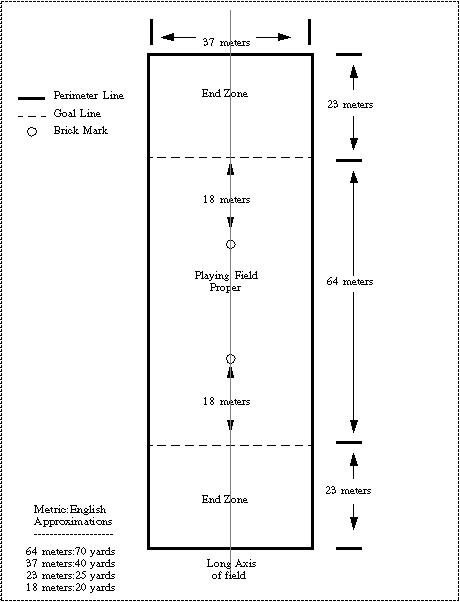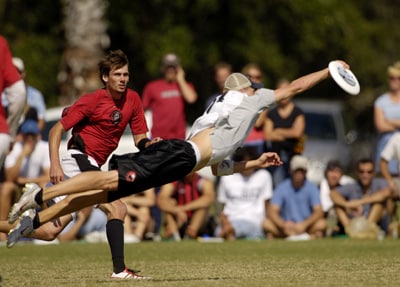History: This sport was devised in 1967 in New Jersey by students at Columbia High School in Maplewood. It is a unique sport in that it  relies on high competition and the “spirit of the game” (honesty and a sense of fair play) since it has no official referees, only observers.
relies on high competition and the “spirit of the game” (honesty and a sense of fair play) since it has no official referees, only observers.
Objective: This competitive, non-contact sport is played with a disc or Frisbee with the objective of receiving a teammate’s pass while in the opponent’s endzone.
Teams: Generally, 2 teams of 7 players each with unlimited substations.
Play: A coin toss determines which team will throw-off. Each team lines up on the edge of their own endzone and one team throws or pulls the disc to the offensive team to begin play. If the disc is grounded on the throw-off, the offense may collect it from the floor. If the pull is touched and dropped by the offense, it is a turnover. Players may throw the disc in any direction. Players may not run with the disc, except to take a few steps to overcome momentum. Once stopped, they may pivot on one foot for up to 10 seconds during a stall. The defenders may count this out loud (a stall count). Players may not toss the disc to themselves.
A point is scored each time the disc is received in the endzone. After a point, the team that just scored stays in that endzone and the opposing team moves to the opposite endzone; play is initiated again with a pull by the team that just scored.
The disc is in-play as long as it is not grounded, or out of bounds (after the first pull). Once the play is dead, there is a turnover at the point the disc was grounded or near to where it went out of bounds.


1 Comment